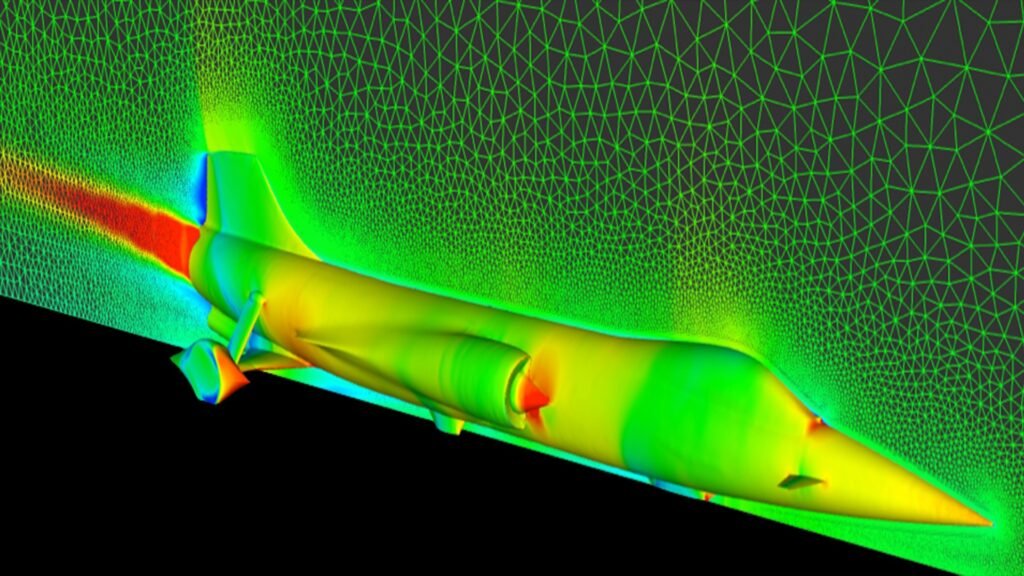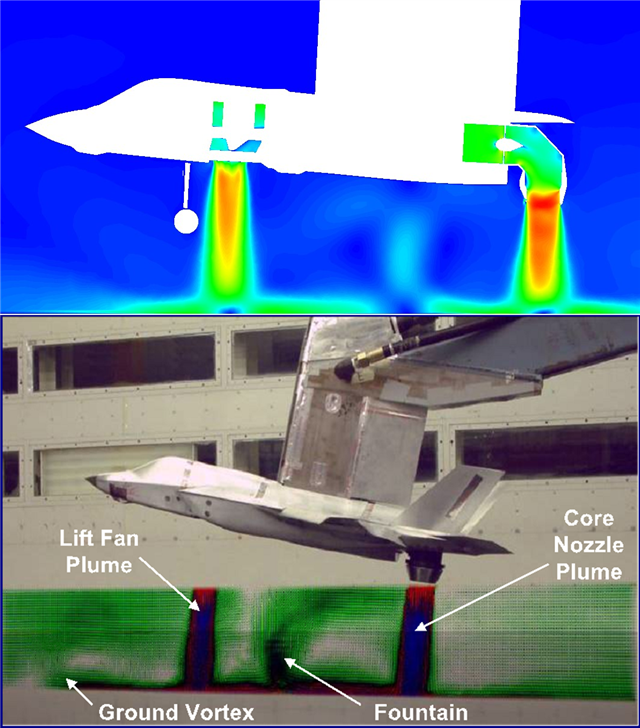Introduction

Computational Fluid Dynamics (CFD) has emerged as a game-changer in the aerospace industry, revolutionizing the way engineers analyze and optimize aircraft performance. In this article, we embark on a journey through the progress of CFD in aerospace, from its humble beginnings alongside the wind tunnel to its promising future beyond traditional testing methods.
The Birth of CFD: From Physical to Virtual Testing
Before the advent of CFD, the wind tunnel was the cornerstone of aerospace testing. This section provides a brief overview of the wind tunnel’s historical significance and its role in shaping early aircraft design. We then transition into the emergence of CFD, highlighting how it brought about a paradigm shift by allowing engineers to conduct virtual tests, saving time and resources in the process.
● Early Days of Fluid Dynamics: From Wind Tunnels to Computational Methods
● Computational Fluid Dynamics (CFD): Revolutionizing Fluid Flow Analysis
● Transition from Empirical Models to Numerical Simulations in Fluid Dynamics
● Key Milestones in the Development of CFD Software and Algorithms
● Advantages of Virtual Testing: Cost-Efficiency and Time-Saving Benefits
● Applications Across Industries: Aerospace, Automotive, Energy, and More
● The Role of High-Performance Computing in Advancing CFD Capabilities
● Challenges and Limitations: Accuracy and Validation in Virtual Testing
● Future Horizons: Machine Learning and AI Integration in CFD Simulations
● CFD in the Modern Era: Shaping Engineering and Design Paradigms.
CFD in Action: Simulating Real-World Scenarios

One of the key advantages of CFD lies in its ability to simulate complex, real-world aerodynamic scenarios. From turbulent flows to boundary layer interactions, CFD software can precisely model a wide range of conditions, providing invaluable insights into aircraft behavior under various operating conditions. This section delves into the practical applications of CFD in aerospace design, emphasizing its versatility and accuracy.
● Understanding Computational Fluid Dynamics (CFD) in Engineering
● Real-World Scenarios: Industries Benefiting from CFD Simulations
● Aerospace Advancements: Optimizing Aircraft Design and Performance
● Automotive Innovation: Enhancing Vehicle Aerodynamics and Efficiency
● Energy Sector Applications: Simulating Fluid Flow in Power Generation
● Environmental Impact Assessment: CFD in Pollution Control and Mitigation
● Building and Infrastructure: CFD for HVAC Systems and Wind Load Analysis
● Marine Engineering: CFD for Ship Hydrodynamics and Propulsion Efficiency
● Biomedical and Life Sciences: CFD in Blood Flow and Respiratory Studies
● Future Frontiers: Advancements in CFD Technology and Applications
Enhancing Efficiency and Sustainability
CFD’s impact on aircraft efficiency and sustainability cannot be overstated. By fine-tuning aerodynamic designs, engineers can significantly reduce fuel consumption and emissions. Additionally, CFD enables the optimization of winglets, reducing drag and further enhancing efficiency. We explore how CFD is contributing to the industry’s efforts towards greener, more sustainable aviation.
The Road Ahead: Beyond Wind Tunnels
While wind tunnels remain a crucial tool in aerospace testing, the future holds exciting possibilities for CFD. Advancements in computing power and simulation techniques are enabling engineers to tackle even more complex and intricate aerodynamic challenges. This section looks ahead to the integration of AI and machine learning in CFD, as well as the potential for real-time simulations that could revolutionize aircraft development.
CFD in Supersonic and Hypersonic Flight
As the aerospace industry sets its sights on supersonic and hypersonic flight, CFD plays an instrumental role in shaping these next-generation aircraft. We explore how CFD is being used to address the unique aerodynamic challenges posed by high-speed flight, from shockwave interactions to thermal management.
● Supersonic and Hypersonic Flight: Pushing Boundaries of Speed and Efficiency
● Understanding the Challenges: Aerodynamic Phenomena at High Mach Numbers
● CFDs Crucial Role: Simulating Flow Regimes Beyond the Speed of Sound
● Aerothermodynamics of Supersonic and Hypersonic Vehicles: A CFD Perspective
● Designing for Extreme Conditions: Heat, Shockwaves, and Pressure Variations
● Validation and Verification: Ensuring CFD Accuracy in Hypersonic Flows
● Hypersonic Airbreathing Propulsion: CFD for Scramjets and Ramjets
● Advancements in Material Science: CFD in Thermal Protection System Design
● Real-World Applications: CFD’s Contribution to Future Hypersonic Flight Programs
● Future Prospects: CFD’s Role in Pioneering Hypersonic Technologies.
Conclusion: Charting a Course for Future Flight
The journey of CFD in aerospace has been nothing short of extraordinary, propelling the industry into new realms of efficiency, sustainability, and innovation. As we stand on the precipice of a new era in aviation, with supersonic and hypersonic travel on the horizon, CFD stands as an invaluable ally in shaping the aircraft of tomorrow. With continued advancements, the synergy between CFD and traditional testing methods will undoubtedly steer the aerospace industry towards even greater heights.
